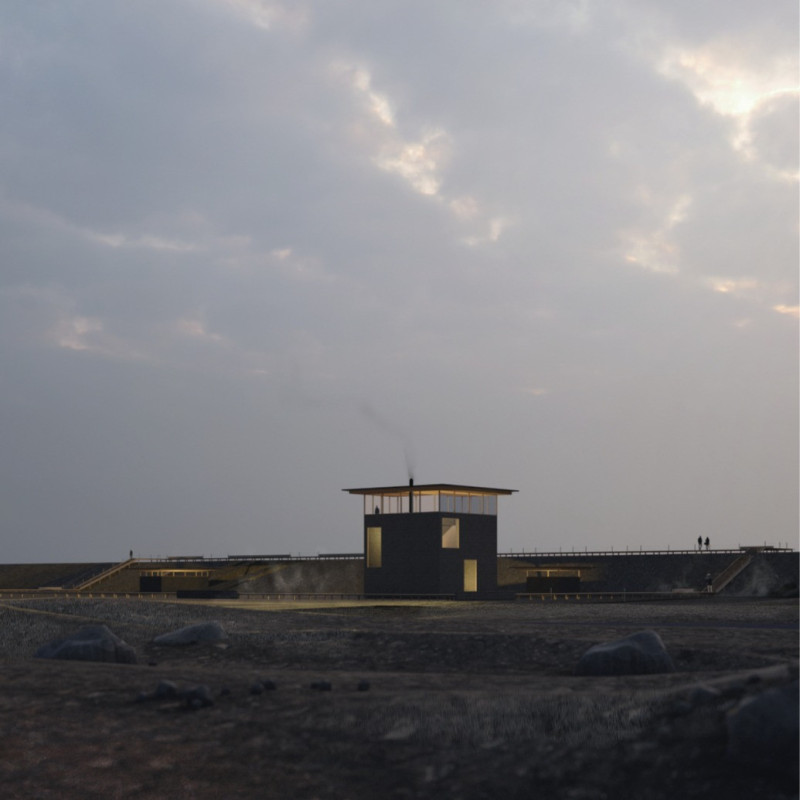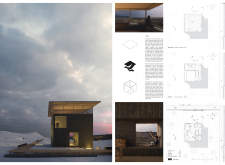5 key facts about this project
The design responds to the unique geology of the Icelandic landscape, particularly focusing on the Karlagjá and Kvennagagjá caves. Set among striking tectonic features, the approach emphasizes the concept of framing, which enhances accessibility to these natural wonders while enriching the experience for visitors. The project consists of three main components, each serving distinct functions while adhering to a cohesive design language that resonates with the surrounding environment.
Visitor Welcome Center
The first component is positioned at the intersection of the car park and the access route to the Karlagjá caves. This welcoming center serves various purposes, offering amenities such as a café, a small office, and an observation platform. The platform provides visitors with expansive views of the dramatic landscape. This connection encourages people to engage with their surroundings in a meaningful way.
Entrance to Karlagjá Caves
The second element is designed to clearly mark the entrance to the Karlagjá caves. Its architecture ensures that access remains viable throughout the year, accommodating varying weather conditions that may affect visibility. This structure includes an information point and storage facilities. These features meet practical requirements while also helping visitors learn about the geological significance of the area, deepening their understanding and appreciation of the landscape.
Kvennagagjá Caves Access
The third architectural component focuses on the Kvennagagjá caves, providing a more personal space for visitors. This part includes changing rooms that allow people to bathe in the cave. Here, users connect physically and emotionally to the geological context. The design emphasizes privacy, wrapping around an enclosed area that enhances the sense of retreat amid the powerful landscape.
Throughout the design, attention to detail is evident. The integration of these components serves both functional purposes and the overarching narrative of exploration and respect for Iceland’s extraordinary natural environment. Each element invites interaction while encouraging visitors to appreciate the place's unique features.





















































